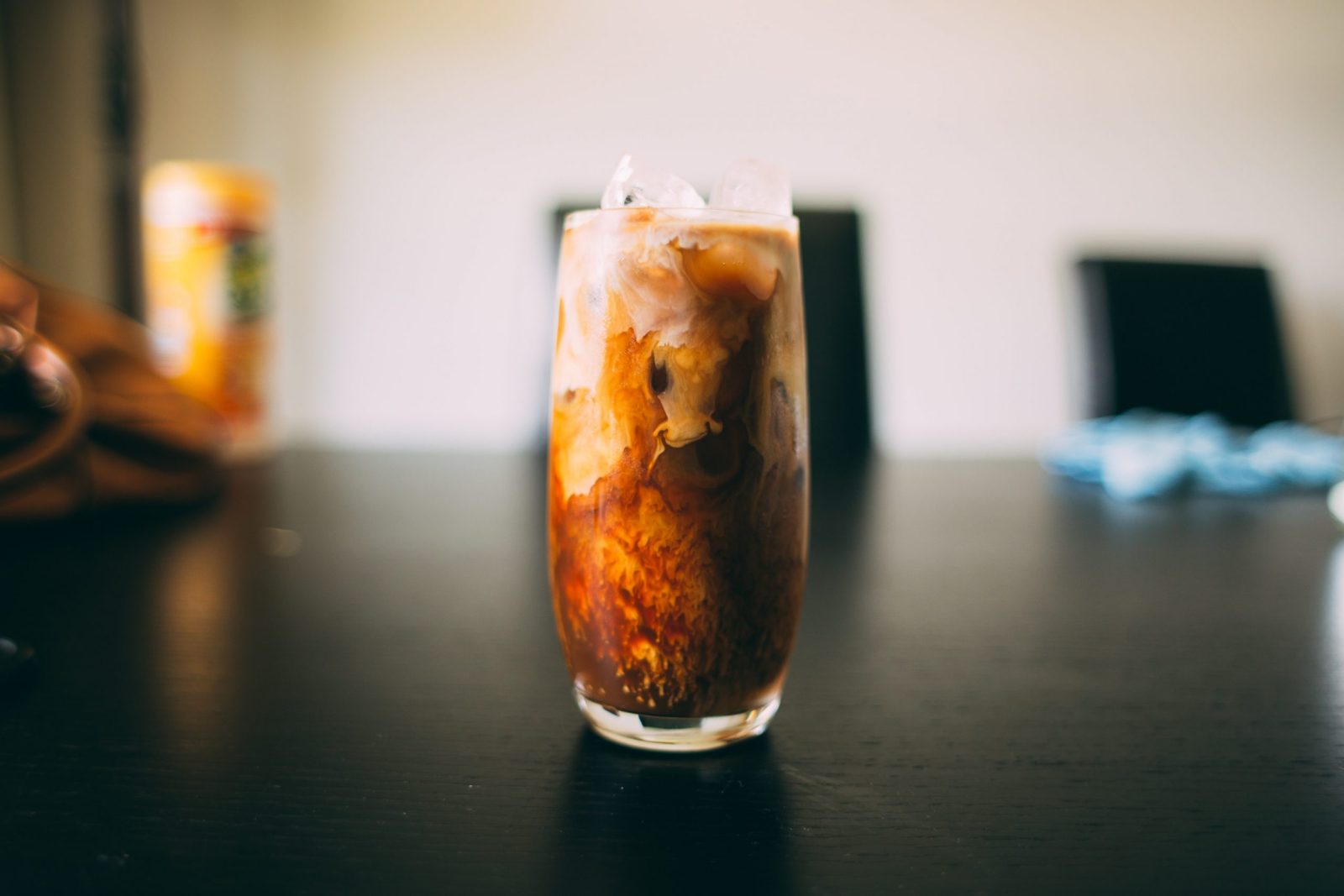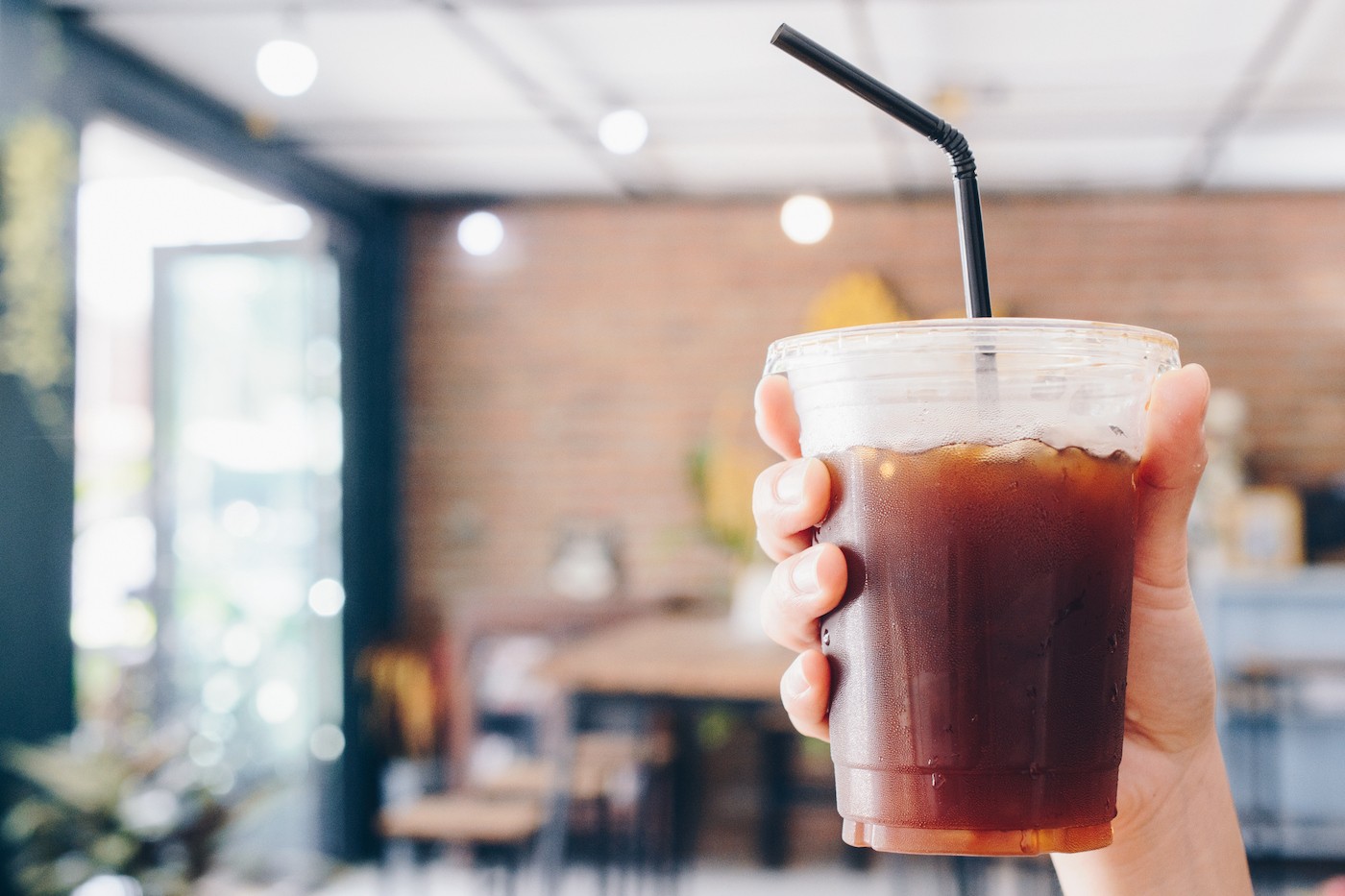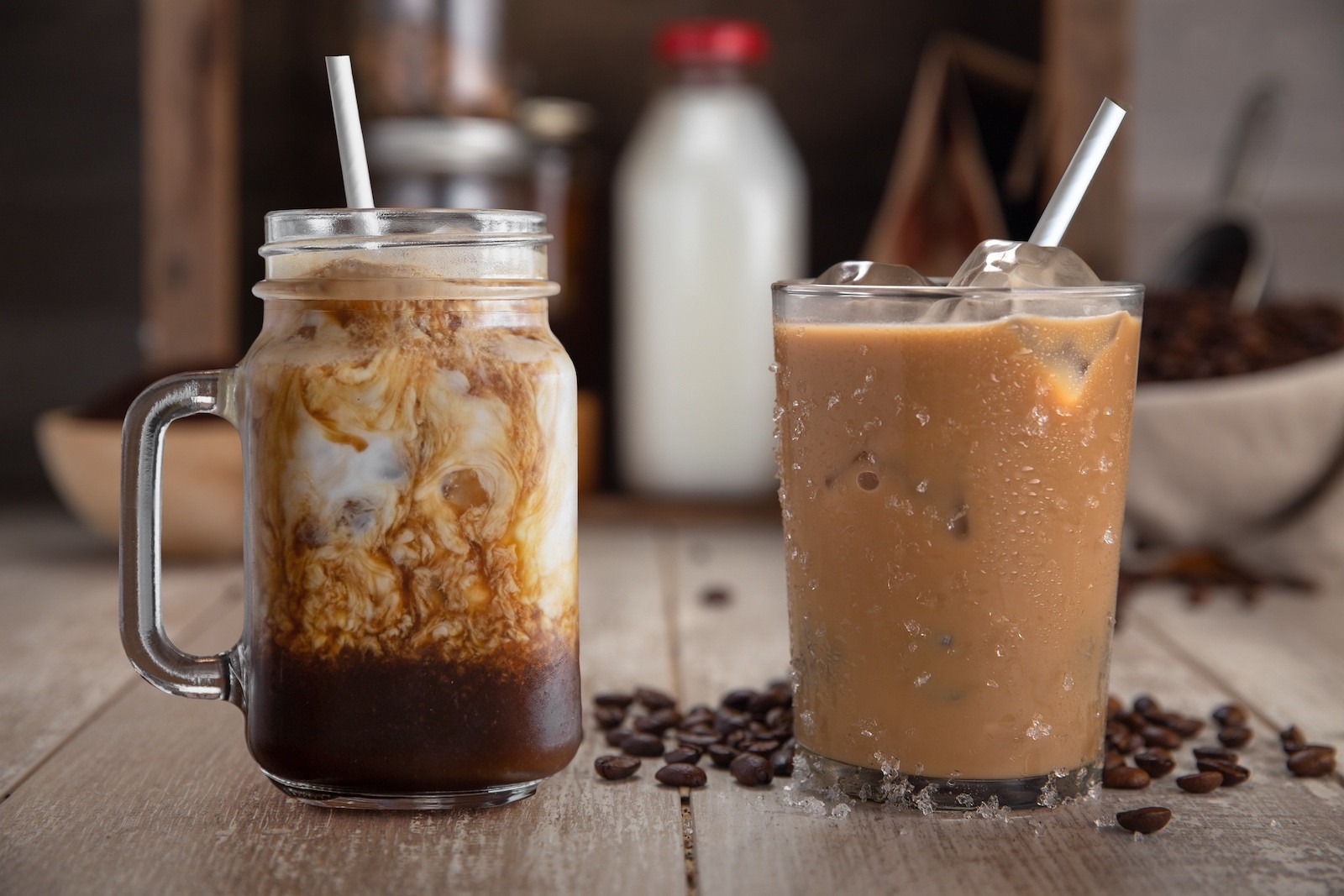If you frequent different coffee shops, chances are you’ve seen both cold brew and iced coffee on the menu. Did you know there’s a difference between these two caffeinated favorites? We break down the differences of cold brew vs iced coffee right here!
While both of these cold coffee beverages are refreshing and enjoyable, these drinks are made quite differently.
Never sure which one to order? Keep reading to get the full scoop on each cold coffee beverage to find your preference.
What is Iced Coffee?
Iced coffee is exactly what it sounds like: regularly brewed coffee served over ice. This method is quick—all you have to do is brew as normal, cool it down, and pour over ice. However, this method dilutes the coffee.
If you don’t drink an iced coffee quickly after ordering, the melted ice will continue to water down your drink as time passes (Try putting your iced coffee in an insulated cup to help mitigate this). When ordering iced coffee at national coffee shops chains like Dunkin’ and Starbucks, iced coffee can vary quite a bit.
(Tip: Request no ice or less ice if you’re concerned about your coffee getting diluted on a warm day).
To prevent the ice from watering your beverage down, make your iced coffee extra strong by doubling the amount of ground coffee you put in your coffee maker.
Another easy way to double up on the flavor is to make coffee ice cubes.
Pour cooled coffee into an ice cube tray, freeze it, and use it for your next cup of iced coffee.
If you’re looking to make iced coffee at home, check out the newest line of Keurig brewers with a special Iced Coffee feature.
This feature does not heat the coffee as it would when brewing a normal K-cup.

What Is Cold Brew Coffee?
Like iced coffee, cold brew coffee is also served over ice. However, cold brew differs from iced coffee in how it is brewed.
To make cold brew, coarse-ground coffee is steeped in cold water for at least twelve hours. The longer the coffee sits, the stronger the flavor.
Many cold coffee lovers prefer cold brew for a stronger, richer taste than iced coffee. The water used to make a cold brew is either room temperature or cold water to start.
Making cold brew calls for a higher grounds-to-water ratio than traditional drop coffee, using almost twice the amount of grounds.
After the cold brew has steeped (usually between 12 to 24 hours), the grounds are filtered out. What’s left is a strong coffee concentrate, providing a more intense taste for drinkers.
Like iced coffee, cold brew can also be made at home.
Many ready-to-use cold brew concentrates are available or you can steep your own!
Caffeine Content in Cold Brew vs. Iced Coffee
The caffeine content in cold brew and iced coffee will vary depending on where you order it and the type of coffee beans used.
In general, cold brew will contain more caffeine than iced coffee. If you’re looking for a stronger pick-me-up, a cold brew is a great option.
You’ll also find cold brew in its newest form, nitro cold brew, at some Starbucks or local coffee shops.
Cold Brew Vs Iced Coffee
The difference in brewing methods leaves cold brew coffee with a different taste than standard iced coffee.
Cold brew coffee is smoother and less bitter than iced coffee. Ultimately, the choice comes down to your personal preference and what is available to you.
You may find that iced coffee is easier to find than cold brew at some local coffee shops.



Leave a Reply